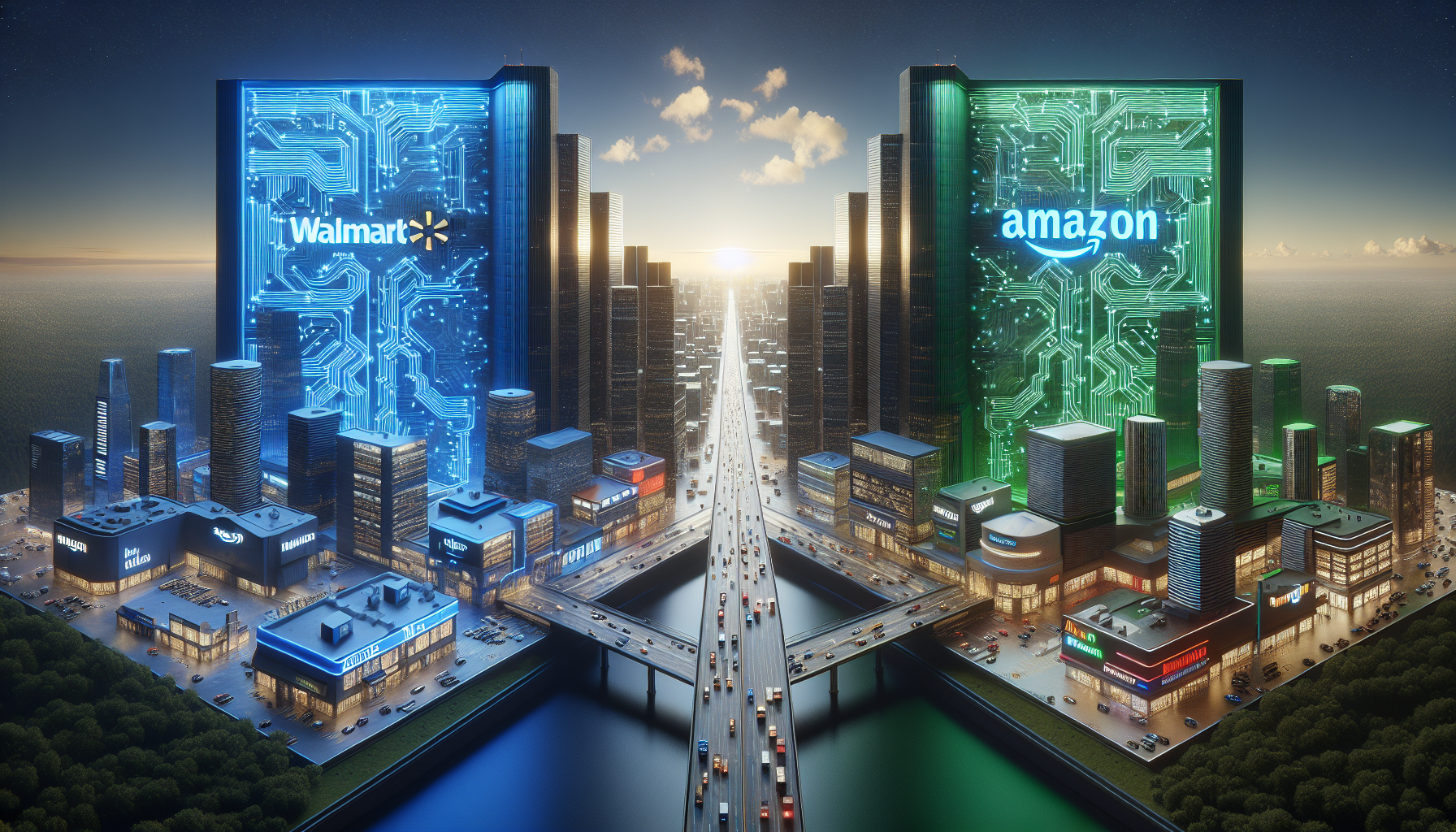Amazon and Walmart Battle for AI-Driven Retail Dominance
The retail landscape is undergoing a significant transformation, driven by the increasing adoption of artificial intelligence (AI) by industry giants Amazon and Walmart. Both companies are leveraging AI to reshape their business models, supply chains, and customer experiences, setting the stage for a high-stakes battle for AI-driven retail dominance.
Strategic Approaches and AI Investments
Amazon and Walmart have adopted distinct strategies to integrate AI into their operations.
Amazon's Proprietary AI Infrastructure
Amazon is investing heavily in building a proprietary AI infrastructure, committing $20 billion to AI and data centers. The company is integrating AI across its operations, from warehouse robots that have reached near parity with human workers to enhanced logistics, such as incorporating Whole Foods into its delivery network, and advanced consumer-facing services, like AI-powered Ring security alerts. Amazon's strategy is centered on creating an "everything ecosystem" that embeds AI, cloud computing, FinTech, and robotics to deliver highly integrated and intelligent consumer experiences.
Walmart's Democratized AI Strategy
Walmart, on the other hand, is pursuing a democratized AI strategy, embedding AI tools directly into the workflows of its 1.5 million store associates to amplify their productivity. The company is also making direct investments in processing facilities to strengthen its supply chain efficiency. On the consumer side, Walmart is embracing AI-driven shopping agents and launching initiatives like "Sparky," its AI assistant for shopping, and expanding its OnePay digital banking system to engage younger, digitally savvy consumers. Unlike Amazon, Walmart's diversified model, spanning a vast physical store network, reduces reliance on digital ad revenue and positions the retailer to integrate AI seamlessly into both online and in-store experiences.
Key Battlegrounds
The battle for AI-driven retail dominance is being fought on several fronts:
Ecosystem Integration
Both companies are evolving into tech-driven ecosystems, embedding AI not just for sales but to create interconnected, responsive platforms that meet every consumer need ("everything retailer" model).
Supply Chain & Automation
Amazon's near-robotic workforce parity in warehouses and Walmart's control over supply chains highlight a race to automate and optimize logistics, aiming for faster, more reliable delivery.
AI Shopping Agents
The emergence of sophisticated AI shopping agents is a disruptive force. These agents can automate purchases and negotiate prices directly with sellers, potentially reducing Amazon's ad revenue and challenging its marketplace dominance. Walmart is strategically embracing these agents to level the playing field against online-first rivals.
Consumer Engagement & Payments
Walmart is pushing further into FinTech, launching new credit card programs and digital banking features to build loyalty among Gen Z and digitally native shoppers. Amazon, meanwhile, is extending AI to customer-facing services, enhancing personalization and convenience.
Competitive Challenges
Each company faces unique challenges in the battle for AI-driven retail dominance:
Amazon's Vulnerabilities
Heavy dependence on digital ad revenue means Amazon could face risks if AI shopping agents lead consumers to bypass its traditional marketplace interfaces. The company must innovate its revenue streams as AI agents become more central to the shopping process.
Walmart's Advantage
Walmart's hybrid model, combining physical stores, digital integration, and a proactive AI stance, allows it to adapt rapidly, potentially gaining a leadership position in AI-driven retail.
Outlook
As artificial intelligence continues to advance, the Amazon vs. Walmart rivalry is evolving into a technological arms race. Both giants are betting on AI not only to optimize their current operations but also to define the future of retail—one where automation, personalization, and ecosystem integration are paramount. The outcome will likely reshape global retail, setting new standards for how technology powers consumer commerce.
In this high-stakes battle, the company that successfully integrates AI across its operations, supply chain, and customer experiences will emerge as the leader in AI-driven retail dominance.

